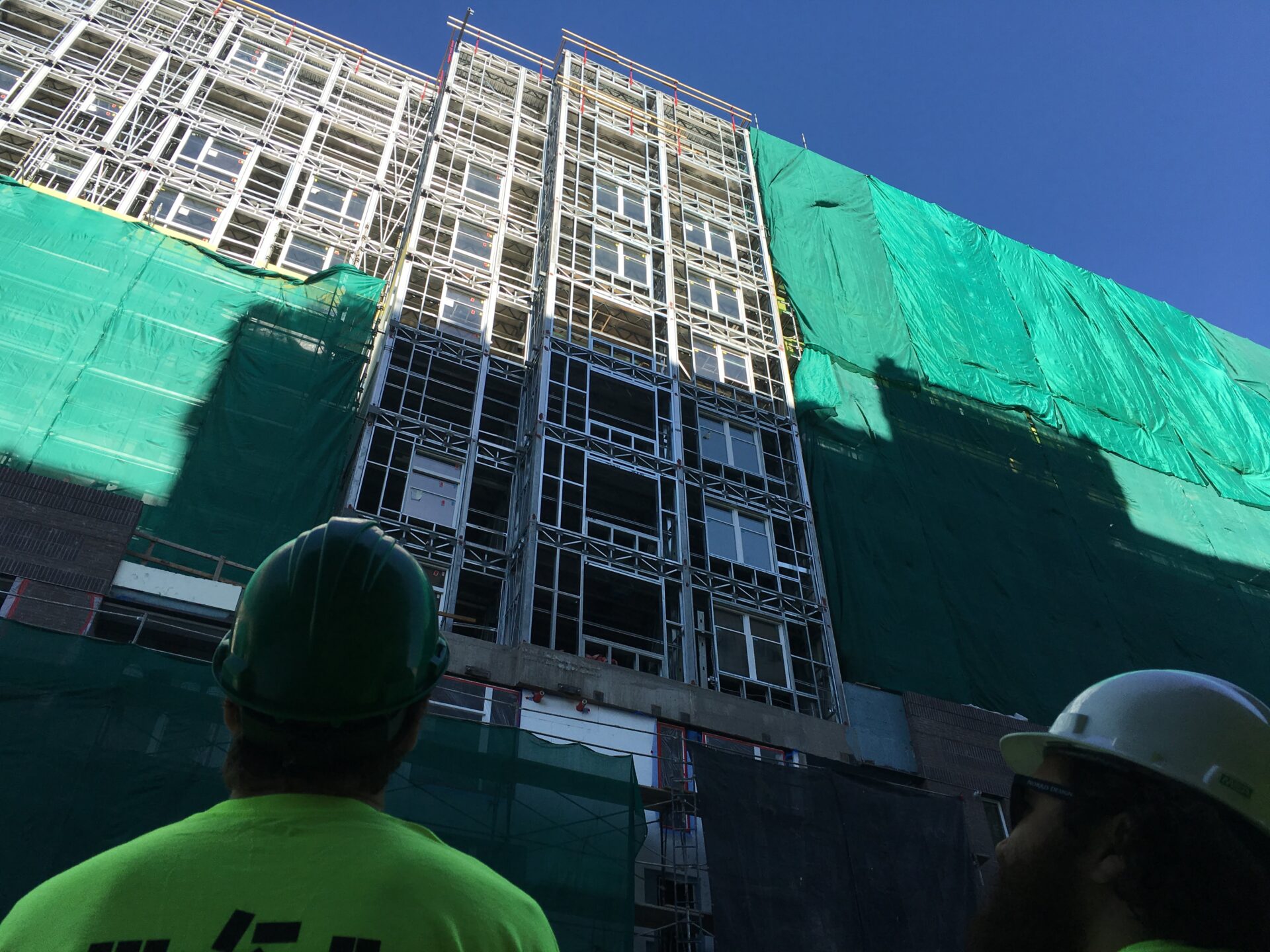As construction costs continue to rise and skilled labor becomes harder to come by, KEPHART continues to explore innovative solutions that will help our clients reduce their costs. Off-site construction, although not necessarily a new solution, has recently reinvented itself and emerged as a viable option to help alleviate labor shortages and compress construction schedules.
One approach, particularly used for clients interested in high-rise design, is the use of metal stud panels. Light gauge steel walls are fabricated offsite, then later transported and assembled onsite. Remote panelization allows manufacturers to build the walls in a controlled environment with steady labor, reducing the time spent on site while simultaneously improving the quality and accuracy of the individual component. The faster construction also reduces the cost of financing and some of the risk associated with development.
There are four steel panelization manufacturers that KEPHART has experience working with – Prescient, Infinity Structures, FRAMECAD and Black Swan. Each requires a unique design approach and coordination technique. The key to a successful project utilizing one of these systems is assembling a strong team that understands this type of construction and its nuances. Many of these systems have specific design parameters, so it is critical to make a decision regarding which system will be used at the start of the design process.

Alexan Uptown in Denver, Colorado built using Prescient, a light-gauge structural steel framing system.
While steel panelization is one of the primary methods of off-site construction, others like wood wall panelization, CLT (cross-laminated timber), Kingspan Insulated Panels and USG Structural Concrete Panels offer similar cost-benefits. Companies are frantically expanding to meet the demand for this new, “off-site” paradigm shift. From Simple Homes, a local Denver company focusing on single family and smaller attached residences, to Katerra, a billion-dollar Silicon Valley startup who focuses on commercial and multifamily buildings, the opportunity to include off-site construction in a project is becoming increasingly appealing.
And finally, a conversation about alternative building systems and off-site construction wouldn’t be complete without discussing modular box manufacturers. Modular construction has come a long way since the mass production of cheap, post-war manufactures homes. The technology now offers a high-quality product with minimal site work and very few design tradeoffs. Each box is finished entirely in the factory, including flooring and appliances, and is craned into place on site at an average of 6 to 7 modular boxes per day. The key to a successful modular project is early integration of the entire project team to ensure precise coordination and consistent expectations.
Our knowledge and experience working with these systems allows us to navigate the benefits of each and help you make an informed decision which building system might be the best fit for your project. If you are considering an alternative building method, please call Doug Van Lerberghe at 303-832-4474.







